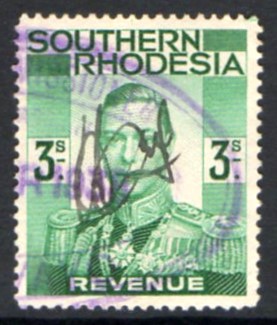
Rhodesia , now divided between Zambia and Zimbabwe , first issued revenue stamps in 1890, and Zimbabwe continues to do so to this day. [1]

Rhodesia , now divided between Zambia and Zimbabwe , first issued revenue stamps in 1890, and Zimbabwe continues to do so to this day. [1]
The British South Africa Company issued revenue stamps for use in all of Rhodesia from 1890 to 1909. The first issue had four values from £1 to £10 and they bore the company's coat of arms. These were issued in the form of postage stamps but due to their high values they never required for postal use so they are regarded by many as purely revenue stamps. In 1896, some of these were surcharged with values between £50 and £200. These are exceedingly rare as few were printed. Later in 1896, a new square design still featuring the coat of arms but with a more ornate frame was issued. This was replaced in 1898 with a design similar to the original 1890 issue but with some differences in the stamp's border. This set included a £100 cherry red value, which is very rare and only six copies of the stamp are known to exist. [2] Around 1907, some of these stamps were overprinted REVENUE to disqualify them from postal use, and in 1909 the £1 to £5 values were overprinted RHODESIA when the company approved this usage on its stamps. These continued to be used until the 1920s.
Around 1905, a set of cigarette excise stamps were issued, and these are rare as they were usually torn upon use.

Southern Rhodesia became a separate colony in 1923, and in 1924 its first revenue issues portraying King George V in a military uniform were issued. These were replaced by a new issue portraying an elderly King George in 1930. Following his death, in 1937 a set showing the new monarch King George VI was issued. This had nine values from 3/- to £50. The rarest value is the 7/6 black as it was withdrawn soon after issue, and genuinely used stamps can now fetch over £3000. In 1954, a large set showing the coat of arms was issued with values ranging from 1d to £50. In the 1930s, banderole excise stamps were used to pay cigarette taxes. From around 1937 to the 1940s, various postage stamps were handstamped EXCISE or E for the same purpose. Between 1961 and 1964 various stamps were issued for Personal Tax. These exist with various roulettes, perforations and combinations of both.
Southern Rhodesia joined the Federation of Rhodesia and Nyasaland and used its revenue stamps from 1953 to 1963.
Following Rhodesia's Unilateral Declaration of Independence in November 1965, the country assumed independence and issued its first revenues a year later. They used the 1954 Southern Rhodesia design but with altered inscriptions. One of the values - the 6d red and black - is very rare despite it being one of the most commonly used rates as it was the stamp duty tax on cheques. Its rarity is probably because old stocks of Southern Rhodesian revenues continued to be used instead of it. In 1970 the set was reissued denominated in Rhodesian dollars. There were some provisional surcharges made in 1980 just before the country was renamed Zimbabwe.

In 1980, Rhodesia was renamed Zimbabwe following the end of the civil war. Initially it used Rhodesian revenues with the name obliterated by hand in ink, but in 1981 a new design showing the Zimbabwe Bird was issued. Since around 2000 perforated stamps were withdrawn and replaced by rouletted issues on coloured paper. Due to inflation, these have values up to $200,000.
Northern Rhodesia became a separate protectorate in 1924, and it issued its first revenue stamps a year later with values from £2 to £50. These portrayed King George V and showed a local scene with giraffes, elephants and other wildlife. These continued to be used until the 1950s. Postage stamps were used for revenue transactions of lower values. In 1953, Queen Elizabeth II postage stamps were overprinted with a large R indicating revenue use. About two years later, the 1925 King George V design was reissued with the portrait of the Queen, this time with values ranging from 1d to £50.
In the 1930s, various cigarette excise stamps were also issued, and an employment stamp featuring the coat of arms was issued around 1962.
Northern Rhodesia joined the Federation of Rhodesia and Nyasaland and used its revenue stamps from 1953 to 1963.
Following the dissolution of Rhodesia and Nyasaland in 1963, Northern Rhodesia became independent as Zambia in 1964. Its first revenues were issued in 1964 and depicted the coat of arms. The design was reissued in 1968 denominated in the Zambian kwacha.
| Wikimedia Commons has media related to Revenue stamps of Zimbabwe . |

This is a survey of the postage stamps and postal history of German East Africa.
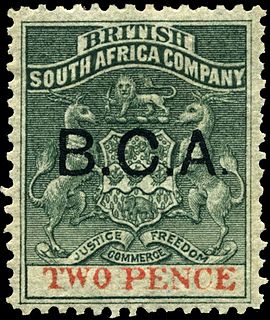
The British Central Africa Protectorate existed in the area of present-day Malawi between 1891 and 1907.
The Federation of Rhodesia and Nyasaland, also known as the Central African Federation (CAF), was a semi-independent state in southern Africa that existed from 1953 to the end of 1963.

This is a survey of the postage stamps and postal history of Zimbabwe.

Revenue stamps of Malta were first issued in 1899, when the islands were a British colony. From that year to 1912, all revenue issues were postage stamps overprinted accordingly, that was either done locally or by De La Rue in London. Postage stamps also became valid for fiscal use in 1913, so no new revenues were issued until 1926–30, when a series of key type stamps depicting King George V were issued. These exist unappropriated for use as general-duty revenues, or with additional inscriptions indicating a specific use; Applications, Contracts, Registers or Stocks & Shares. The only other revenues after this series were £1 stamps depicting George VI and Elizabeth II. Postage stamps remained valid for fiscal use until at least the 1980s.
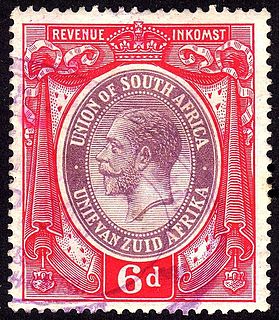
South Africa issued revenue stamps from 1910 to 2009. Apart from national issues various provinces of the country issued revenues from around 1855 to c. 1970.
The Australian State of Tasmania issued adhesive revenue stamps from 1863 to 1998, although impressed stamps had appeared briefly in the 1820s. There were general revenue and stamp duty issues, as well as a number of specific issues for various taxes.

The island of Cyprus first issued revenue stamps in 1878 and continues to do so to this day. The Turkish Republic of Northern Cyprus also issues its own revenue stamps.
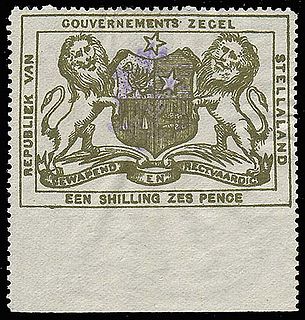
Bechuanaland first issued revenue stamps as Stellaland in 1884. Note: this information is wrong. Bechuanaland was split into British Bechuanaland and the Bechuanaland Protectorate. British Bechuanaland was added to the Cape Colony and the Bechuanaland Protectorate was governed from Mafeking until the seat of government was moved to Gaberone.

The South African Republic (ZAR), later known as Transvaal issued revenue stamps from 1875 to around 1950. There were a number of different stamps for several taxes.
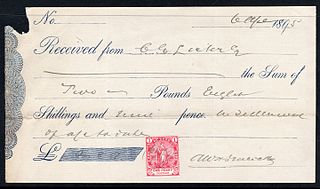
Cape of Good Hope issued revenue stamps from 1864 to 1961. There were a number of different stamps for several taxes.

Kenya, formerly known as British East Africa issued revenue stamps since 1891. There were numerous types of revenue stamps for a variety of taxes and fees. Also valid for fiscal use in Kenya were postage stamps issued by the following entities:

The Federation of Rhodesia and Nyasaland was a short lived semi-independent state in southern Africa that existed from 1953 to the end of 1963. The state comprised the former self-governing colony of Southern Rhodesia and the British protectorates of Northern Rhodesia and Nyasaland. It issued its own revenue stamps from around 1953 to 1955, and these were withdrawn after the federation ceased to exist.

Nyasaland, now known as Malawi, first issued revenue stamps as British Central Africa in 1891 and continued to do so until the late 1980s.

Revenue stamps of Jamaica were first issued in 1855. There were various types of fiscal stamps for different taxes.

Hong Kong issued revenue stamps from 1867 to the 1990s, both when it was a British colony as well as when it was under Japanese occupation.

Malaysia first issued revenue stamps as the Straits Settlements in 1863, and continues to do so to this day. Over the years, a number of entities in modern Malaysia have issued revenue stamps.

Over the years various Malay States issued their own revenue stamps. Now most states use Malaysian revenue stamps, except for Singapore which is independent and no longer uses revenue stamps.

Uganda issued revenue stamps from around 1896 to the 1990s. There were numerous types of revenue stamps for a variety of taxes and fees.
Revenue stamps of Guyana refer to the various revenue or fiscal stamps, whether adhesive, directly embossed or otherwise, which have been issued by Guyana since its independence in 1966. Prior to independence, the country was known as British Guiana, and it had issued its own revenue stamps since the 19th century. Guyana used dual-purpose postage and revenue stamps until 1977, and it issued revenue-only stamps between 1975 and the 2000s. The country has also issued National Insurance stamps, labels for airport departure tax and excise stamps for cigarettes and alcohol.